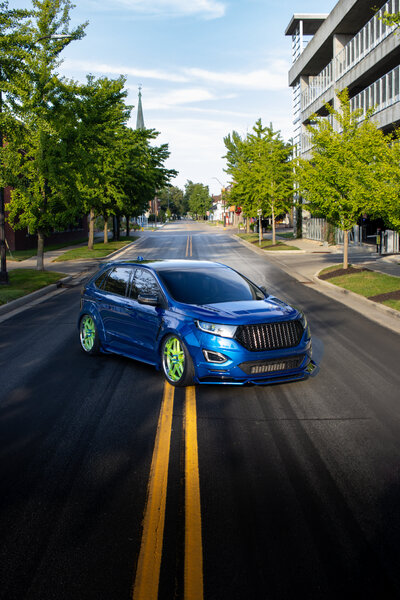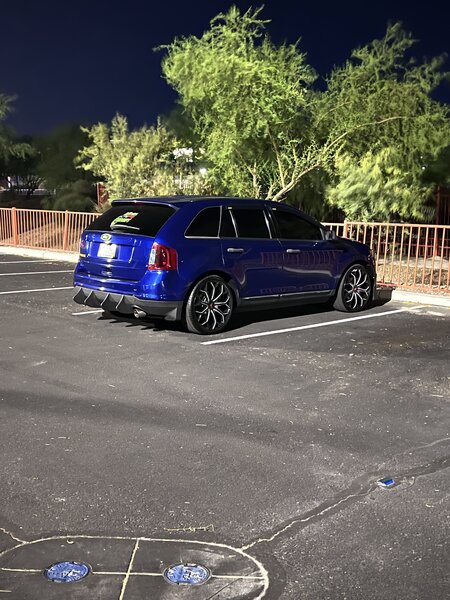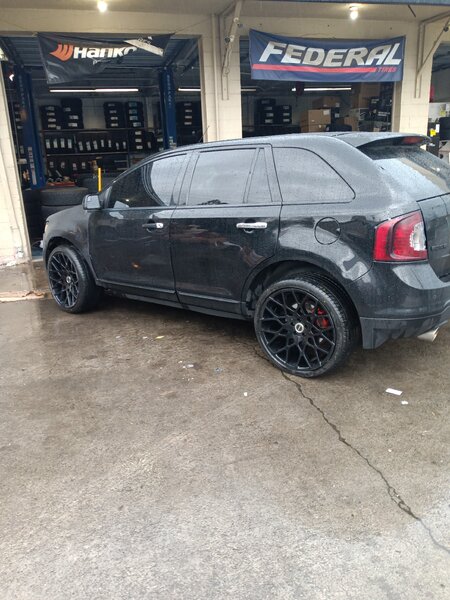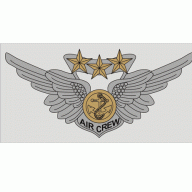-
Popular Contributors
-
Posts
-
This gives me a lot to think about. The ABS module is not that expensive. Putting it in would be a pain on my bad back.
-
By Wubster100 · Posted
For 2019-2020 Edge, you must disconnect the brake lines and replace the entire abs module. Then you need to enter your VIN number and complete the ABS calibration. This can all be done using FORScan. Stop and go, lane centering, and evasive steering assist all work. For 2021-2024 Edge, more information is still needed because PATS immobilizer could be part of the ABS module. FORScan does not currently support ABS service functions or PATS service functions for 2021-2024 Edge. I am going to order an ABS module for my 2021. -
Interesting. Does this also make it Stop and Go ACC? How much programing did you have to do.
-
Perfect. So the new tire is on the same rear axle as a tire that's just been riding around not used for much braking or acceleration. It's just like a new tire. Those tires will be moved to the front in the rotation. Thanks
-
By Wubster100 · Posted
I have a confirmation that you must replace the ABS module to one that supports CADSIII for lane centering to work. -
From the 2019 Edge Workshop Manual... Placing your device cursor over underlined acronyms may yield popup whole word descriptions of the acronyms. RDU The RDU contains an actuator motor, ball ramp, position speed sensor and a multi-plate clutch pack. The position/speed sensor mounted on RDU is reading the ring gear speed. The RDU position/speed sensor provides the information of drive shaft speed and its position. The RDU signals are accessible on the CAN bus via the AWD module. The PTU (Power transfer unit) is a gearbox that attaches to the transmission. It directs power from the transmission differential case through a dog clutch to a hypoid ring gear which is splined to the output flange. When the dog clutch is released, no torque is transferred to the rear driveshaft. When the dog clutch is applied, up to 50% of transmission differential case torque may be transferred to the rear driveshaft. The RDU and PTU (Power transfer unit) interface receive direction from the AWD module. The AWD system continuously monitors vehicle conditions and automatically adjusts the torque distribution between the front and rear wheels. During normal operation, most of the torque is delivered to the front wheels. Both the PTU (Power transfer unit) dog clutch and RDU multi-plate clutches are disengaged and the drive shaft does not rotate in the normal operation. When vehicle require AWD operation, the AWD module commands the RDU to engage the multi-plate clutch, which in turn engages the rear differential to rotate the drive shaft. When the drive shaft's speed is within 30 RPM of the front axle, based on RDU speed sensor which is reading ring gear speed, the AWD module commands the PTU (Power transfer unit) dog clutch to engage, transferring torque to all 4 wheels. The system will then apply or release the RDU clutch pack when necessary depending on road conditions. The AWD system may be referred to as a 4WD system in other service information and owner literature or messages located on the message center. The AWD system is an active system, which means it not only responds to wheel slip between the front and rear axles but also has the ability to anticipate wheel slip and transfer torque to the rear wheels before the slip occurs. The AWD system is active all the time and requires no input from the operator. The RDU is an open differential with electronically controlled clutch pack system. The RDU system vary the amount of torque to the rear axle by controlling the actuator motor by following modes: Economy Mode: During normal FWD operation, both clutches are disengaged and the differential allows the drive shaft to freewheel without transmitting torque to either wheel. Connect Mode: When the vehicle controller determines that the AWD system function may be needed, the AWD module commands the RDU actuator motor to start to engage. The RDU clutch will reach the “touch point” when the driveshaft starts to turn. The AWD module then backs off the RDU clutch, and slowly applies the clutch until driveshaft speed is within 30 RPM of the front axle speed. Torque Mode: When the vehicle is in torque mode, the AWD then commands the PTU (Power transfer unit) to engage. The shift fork moves and slides the collar to engage the dog clutch. The PTU (Power transfer unit) reports back the position of the shift fork to the AWD module. When the PTU (Power transfer unit) is fully engage and the driveshaft is moving with the front axle, the RDU is then commanded to engage the clutch as necessary for the AWD operation. In this mode ,the rear differential is driven and provides torque as part of the AWD system. Rear Drive Axle and Differential - Component Location Item Description 1 RDU actuator motor 2 Speed sensor 3 RDU 4 AWD module 5 PTU (Power transfer unit) From the 2018 Edge Workshop Manual... Spare Tire And Mismatched Tire Sizes If the spare tire is installed, the AWD system may disable automatically and enter FWD only mode to protect driveline components. If the AWD systems detects 1 tire is 5% larger or smaller than the other tires, it may also disable the AWD system. This condition may be indicated by AWD OFF message in the message center. If there is a Check AWD message in the message center from using the spare tire, this indicator should turn off after reinstalling the repaired or replaced normal road tire and cycling the ignition OFF and ON. It is recommended to reinstall the repaired or replaced road tire as soon as possible. Major dissimilar tire sizes between the front and rear axles could cause the AWD system to stop functioning and default to FWD or damage the AWD system. If this condition occurs, a DTC is set and a Check AWD message is displayed on the message center. Four-Wheel Drive Systems - Overview NOTE: The AWD system may be referred to as a 4WD system or Active Torque Coupling (ATC) system in other service information, owner literature, or messages located on the message center. The AWD system consists of the following: Power Transfer Unit (PTU) Rear halfshafts Driveshaft AWD relay module Rear Drive Unit (RDU) Active Torque Coupling (ATC) solenoid PCM for system control logic The AWD system is an active system, which means it not only responds to wheel slip between the front and rear axles but also has the ability to anticipate wheel slip and transfer torque to the rear wheels before the slip occurs. The AWD system is active all the time and requires no input from the operator. The AWD system continuously monitors vehicle conditions and automatically adjusts the torque distribution between the front and rear wheels. During normal operation, most of the torque is delivered to the front wheels. If wheel slip between the front and rear wheels is detected, the vehicle is under heavy acceleration or if the vehicle is in a handling event, the AWD system increases the duty cycle to the Active Torque Coupling (ATC) solenoid. The ATC solenoid engages a pilot clutch in the Rear Drive Unit (RDU) which in turn sets a ball ramp device in motion. The ball ramp device applies the main clutch pack in the RDU and increases torque to the rear wheels as necessary. When the AWD system is functioning properly, there should be no perceived speed difference between the front and rear axles when launching or driving the vehicle on any uniform surface. Traction should be similar to a part time 4WD system operating in 4H (4X4 HIGH), but have no binding in turns. Automatic Torque Coupling Configuration Bar Code Label Location Component Description PCM The PCM is the logic module for the four-wheel drive system. Multiple modules/system inputs are used for the four-wheel drive system to determine the percentage of torque to be transferred to the rear wheels. Transfer Case The transfer case is a gearbox that attaches to the transmission. The transfer case directs power to the rear driveshaft and the Rear Drive Unit (RDU). AWD Relay Module The AWD relay module receives the command from the PCM , and in turn supplies a PWM output to the Automatic Torque Coupling (ATC) solenoid for the requested torque to be applied. Automatic Torque Coupling (ATC) Solenoid The Automatic Torque Coupling (ATC) solenoid applies clutch pressure as controlled by the AWD relay module to increase or decrease torque to the rear wheels. The Rear Drive Unit (RDU) transfers torque from the drive shaft to the rear differential depending on the specific request from the FWD system module ( PCM ). Good luck!
-
Thanks enigma-2 As you can tell, I didn't Google it before posting !!! I'll do that test, which is easy enough, but I'm starting to suspect that the issue is elsewhere, possibly the canister. A few thoughts - pull the electrical plug on the EVAP valve and run it like that for a while, even though that may generate a code, or leave the hose from the canister off and wrap some fabric around the inlet to the valve as a filter to prevent ingesting dust/debris.
-
The 2019 onward, do they still have the coupler in front of the RDU in addition to the one in the PTU?
-
As @1004ron said, the rear axle does disengage. There is a clutch pack Infront of the RDU unit to disconnect the rear axle from the driveshaft. However, the driveshaft is still driven by the engine/PTU and the rear axle is driven by the wheels. The 2019 refresh added a "disconnect" function in the PTU that disengages the driveshaft, hence the driveshaft would stop rotating once disconnected from both ends.
-
-
Topics














